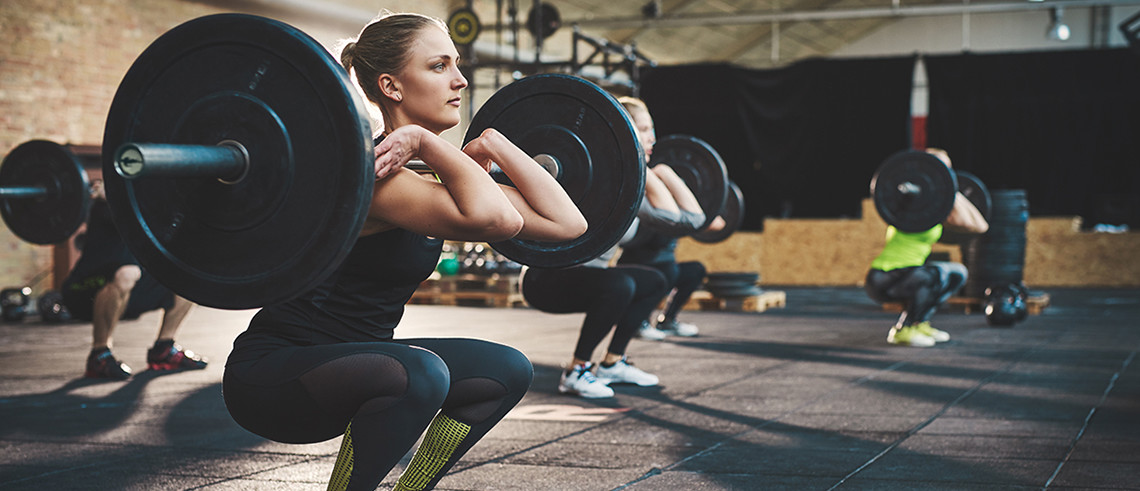Do women need high levels of testosterone and growth hormone to build muscle , lose fat and gain strength ? Find out why the answer is no.
In the complementary industry, there are many products that are used to achieve muscle growth, strength, or fat loss. One such product is a testosterone booster . These testosterone stimulators are generally avoided by women (and sometimes have recommendations against them) for fear of causing androgenic side effects (which they do not cause) because they do not know how the product affects female physiology.
Then there’s the other side of the coin, where women look at a testosterone stimulator, believing that by increasing their testosterone levels, they will gain faster and experience the same results as men with elevated testosterone. Both ideas are inaccurate.
This article will focus on the present, we will discuss the endogenous female testosterone response to resistance exercises and which hormones should be optimized to provide muscle growth, strength gain or fat loss in women .

Hormones
In addition to resistance training, anabolic hormones play an important role in hypertrophy, strength gain and fat loss . Two of the anabolic hormones in the body are testosterone and growth hormone (GH) (Kraemer, 1988).
TESTOTERONE
Women have less testosterone than men (normal values of total testosterone in men are 0.95-4.3pg / dl, compared to 0.7-3.6pg / dl in women). They also have less free testosterone, bioavailable testosterone in men is 0.3-5% (average is 2%), with their free testosterone values ranging from 270-1100 ng / dl, compared to 6-86 ng / dl in women .
While testosterone levels in women may affect physiological adaptation to resistance training, studies suggest that muscle growth and strength increase occur with or without an increase in testosterone (Kraemer & Ratamess, 2005). Subjects Hickson, Hidaka, Foster, Falduto & Chatterton (1994) increased muscle mass and strength during a period of 16 weeks of resistance training, with no change in testosterone levels.
With the exception of Cumming, Wall, Galbraith, Belcastre (1987) and Nindl (2001), most studies that used acute or short-term (10-16 weeks) resistance training did not show significant changes (if any) in total or free testosterone in women in rooms, before and after training (Kraemer et al. 1998, Hickson et al. 1994). Nevertheless, women are still able to gain a significant amount of muscle and strength or effectively lose fat .
Although research contradicted the effects of resistance training on testosterone levels in women (Kraemer & Ratamess, 2005), long-term resistance training (eg more than 6 months) showed an increase in free testosterone in women at rest (and after exercise), (Häkkinen, Pakarinen, Kraemer, Newton & Alen, 2000; Marx et al., 2001), recommending that long-term training is required to elicit a hormonal response.
Studies also show that there is no difference in testosterone levels between hard-working athletes and women with sedentary lifestyles (Tegelman et al. 1990). However, the increase in strength and performance has been correlated with pre-workout testosterone levels (Krahenbuhl, Archer & Petit, 1978), leading Hakkinen et al. (2000) to suggest that testosterone levels in women indicate their ability to train (although not necessarily their results).
GROWTH HORMONE
It has been suggested that other anabolic hormones, such as growth hormone, may be responsible for hypertrophy, strength gain, and poverty in women (Kraemer & Ratamess, 2005), these results being achieved without changes in testosterone levels.
Women naturally have higher growth hormone levels than men (Engstrom, Karlsson & wide, 1998; Widerman, Weltman, Hartman, Veldhuis & Weltman, 2002).
Exercise is a physiological stimulus for the release of growth hormone, and with resistance training indicates significant growth hormone secretion. The extent of exercise-induced growth hormone release is greater than in men (Wideman et al., 2002).
Resistance exercises with numerous sets increase and prolong the growth hormone response in women , compared to individual sets (Mulligan et al., 1996), and higher-volume resistance training elicits a greater growth hormone response than low-volume training (Kraemer et al., 1993). The highest growth hormone responses in women are observed in longer resistance sessions with high overall work using mild to heavy weights (more than 70% 1RM) and shorter recovery periods (Kraemer et al., 1993).
While acute resistance training has been shown to increase growth hormone levels in women at rest, long-term resistance training does not. However, long-term training still elicits a similar exercise-induced growth hormone response before and after resistance training (McCall et al., 1999).
Conclusion
Muscle growth, strength gain or fat loss in women is dependent on their testosterone levels . There are many factors involved in each goal achievement, including an increase in all anabolic hormones. Products that increase growth hormone (or both growth hormone and testosterone) would be a better choice for a woman who wants to optimize hypertrophy, strength, or fat loss than using only a testosterone stimulator.

